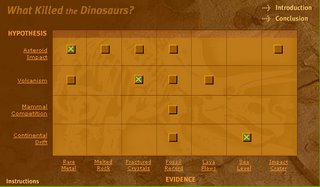What Killed The Dinosaurus ?

It is one of the Greatest puzzles in Paleontology.
For more than 150 millions years, dinosaurs dominated the earth. They were so successful that other animal groups -- mammals included -- had little chance of playing anything more than secondary roles.
Then, 65 million years ago, the dinosaurs vanished from the world forever.
Did they meet a quick and catastrophic end or did they fade away gradually ?
details : http://www.pbs.org/wgbh/evolution/extinction/dinosaurs/
